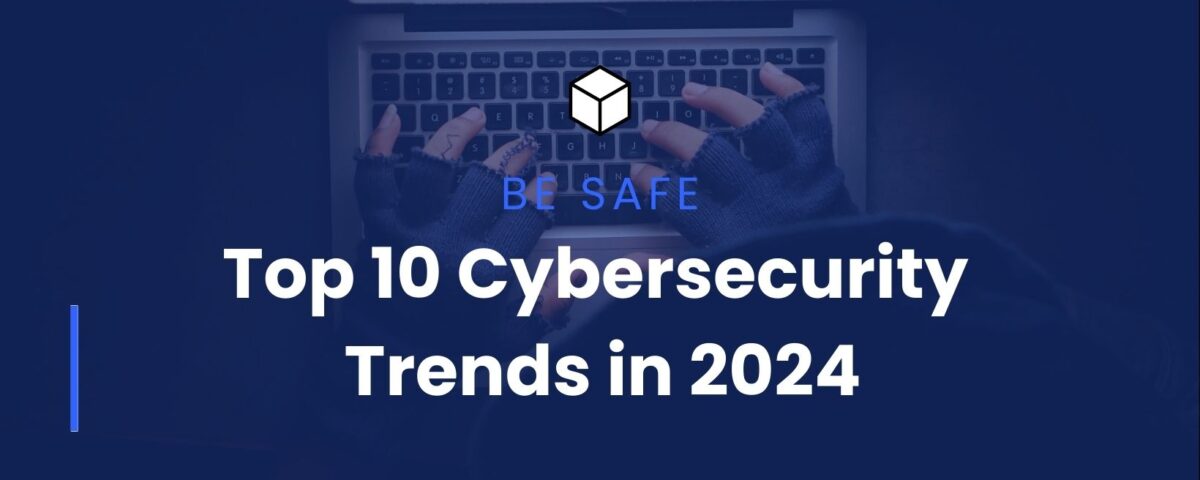
Major Security Flaws Found in Popular E2EE Cloud Storage Providers
October 22, 2024
MacOS Vulnerability Exploited in Adware Attacks
October 22, 2024By the end of 2024, the cost of cyber attacks on the global economy is projected to surpass an astounding $10.5 trillion. This staggering figure underscores the urgency of prioritizing cybersecurity at every level—whether individual, organizational, or governmental.
In the upcoming year, artificial intelligence (AI) will play a pivotal role in transforming both cyber attack strategies and defense mechanisms. From automated threats to AI-enhanced detection systems, every trend in cybersecurity will be touched by the impact of AI.
As technological advancements surge forward, cyber threats are evolving at an equally fast pace. Being informed is the first step toward being prepared. Here’s a look at the key cybersecurity trends that will shape 2024.
1. The Cybersecurity Skills Gap Intensifies
The shortage of professionals with the expertise needed to defend against cyber threats is a growing challenge. In 2024, this problem will only worsen, with 54% of cybersecurity professionals reporting that the skills gap has adversely affected their organizations. We’ll likely see companies offer higher salaries and invest heavily in training and upskilling initiatives to attract and retain top talent.
2. Generative AI: A Tool for Both Attackers and Defenders
As AI technology rapidly advances, we can expect more sophisticated AI-driven cyber attacks. This includes deepfake-powered social engineering, smart malware that adapts to avoid detection, and automated phishing attacks. At the same time, AI will be instrumental in helping organizations detect threats through real-time anomaly detection, automated incident response, and enhanced authentication methods. In the ongoing battle of cyber attack and defense, AI will be the key player, giving a strategic advantage to whichever side utilizes it most effectively.
3. Next-Level Phishing Attacks
Phishing attacks, which rely on deceiving users into giving unauthorized access, will become even more targeted and sophisticated. With the rise of generative AI tools, cybercriminals can craft more convincing, personalized messages, making phishing attempts harder to detect. Deepfake technology will also make impersonation attacks more frequent. The best defenses will involve organization-wide awareness campaigns, AI-driven detection tools, and the continued adoption of zero-trust frameworks.
4. Cybersecurity Enters the Boardroom
In 2024, cybersecurity will no longer be solely an IT issue—it will be a strategic priority for organizations. Gartner predicts that by 2026, 70% of corporate boards will include at least one cybersecurity expert. This shift will enable companies to go beyond reactive defenses, adopting proactive strategies that both mitigate risks and unlock new business opportunities.
5. IoT Vulnerabilities on the Rise
As the Internet of Things (IoT) expands, more devices will be connected, creating new entry points for attackers. The ongoing work-from-home trend exacerbates this issue, with employees often using inadequately secured personal devices. IoT devices, designed with convenience in mind, frequently lack robust security measures. Despite increasing awareness of these vulnerabilities, the slow pace of industry-wide implementation of IoT security standards means that IoT will remain a weak link in many security ecosystems.
6. Cyber Resilience Takes Center Stage
As cyber attacks become more sophisticated, organizations are recognizing that prevention alone is no longer enough. The focus in 2024 will shift toward cyber resilience—the ability to continue operations despite breaches. While cybersecurity aims to stop attacks, resilience measures ensure minimal downtime, data loss, and disruption in the event of a successful attack. Companies will prioritize building agile recovery systems as part of their strategic planning.
7. Zero Trust Gets Smarter
The concept of zero trust—where no one is trusted by default—will continue to evolve. In 2024, zero trust will extend beyond network boundaries, incorporating remote workers, partner organizations, and IoT devices. It will become a more adaptive, AI-powered system that continuously monitors authentication and activity in real time, offering a holistic approach to security.
8. Cyber Warfare and State-Sponsored Attacks
The conflict in Ukraine has highlighted the increasing use of cyber warfare to target both military and civilian infrastructure. This trend is expected to continue in 2024, with phishing attacks and distributed denial-of-service (DDoS) attacks being the most commonly used tactics. Cyber attacks will also be deployed to disrupt elections in key countries like the US, UK, and India. State-sponsored cyber operations will remain a major concern on the global security landscape.
9. The Growing Importance of Soft Skills for Cybersecurity Professionals
In 2024, cybersecurity professionals will face an increasingly complex landscape. It won’t just be about technical expertise—social, cultural, and interpersonal skills will be critical. As security threats become more sophisticated, professionals will need to excel in communication, relationship-building, and problem-solving to effectively mitigate risks.
10. Stricter Cybersecurity Regulations
Governments around the world are responding to rising cyber threats by introducing new regulations. In the UK, businesses must comply with the Product Security and Telecommunications Act by April 2024, which requires networked products to meet minimum security standards, such as not using default passwords. Similarly, the EU’s Radio Equipment Directive is set to take effect in





